The left-leaning media have come out in force against the notion that Australia’s immigration intake remains too high.
The SMH/Age posted a weak sauce ‘fact check’ on claims that Australia has experienced “unprecedented immigration” and “Big Australia by stealth”.
The authors Natassia Chrysanthos and Shane Wright claim that the recent migration surge is merely ‘catch-up’ after borders were closed during the pandemic:
When commentators say there has been unprecedented migration in recent years, that is supported by the data showing a migrant boom after Australia reopened its borders. However, that claim does not factor in the unprecedented dip in migration that immediately preceded it, in 2020 and 2021…
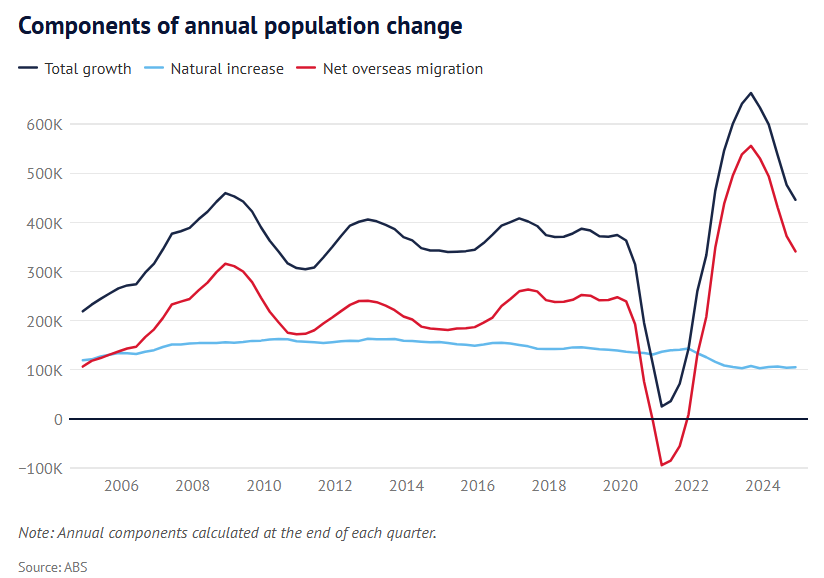
The article then claimed that Australia’s population is smaller than it would have been if the pandemic hadn’t arrived, which is both irrelevant and misleading.
You will notice that the above chart only shows immigration and population growth from 2005 onwards. The article conveniently ignores the fact that immigration and population growth increased dramatically from 2005, as illustrated below:
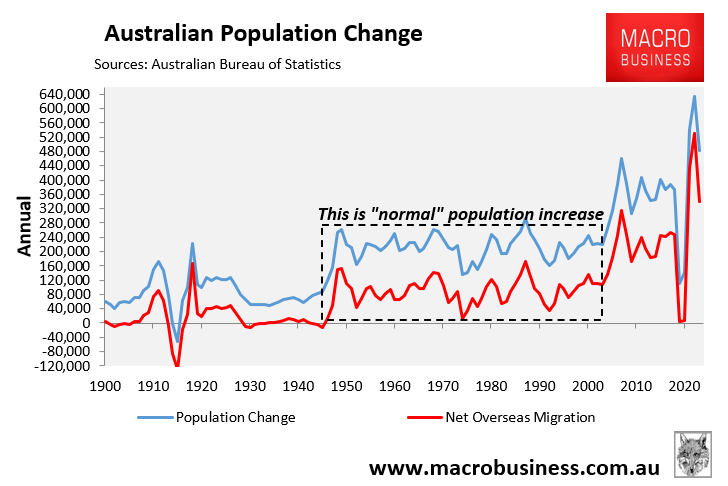
In the 60 years following World War 2, Australia’s net overseas migration (NOM) averaged 90,000 per annum. In only two years over that 60-year period, NOM exceeded 150,000, and only just.
In the early 2000s, under pressure from the business lobby, the Howard government decided to ramp up immigration, which future governments doubled down on.
In the 15 years leading up to the end of 2019, just prior to the pandemic, Australia’s NOM surged from an average of 90,000 in the 60 years post-WW2 to an average of 220,500, an increase of 145%.
In the five years to the end of 2024, which includes the pandemic lockdowns, NOM averaged 265,000, a 194% increase on the post-war average.
As a result, Australia’s population ballooned by 8.5 million in the first 25 years of this century—a 45% increase—the fastest growth in the advanced world.
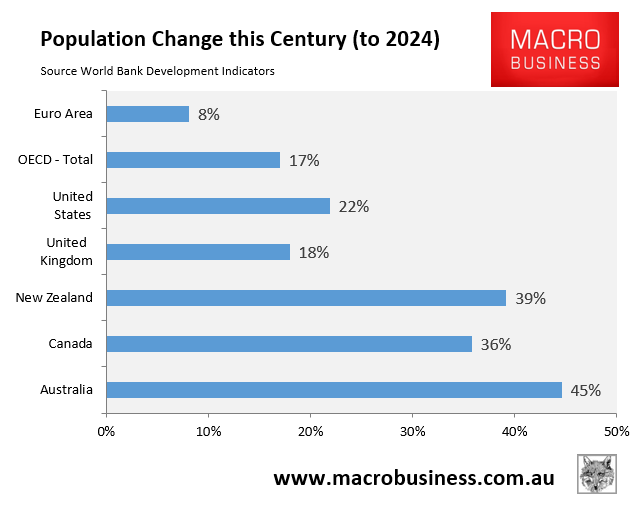
The Centre for Population projects that Australia’s population will balloon by 13.5 million over the next 40 years, equivalent to adding another Sydney, Melbourne, and Brisbane to the current population:

Source: Centre for Population (December 2024)
The Centre for Population and the Intergenerational Report project that Australia’s NOM will average 235,000 over the next 40 years, which is around 15,000 higher than the 15 years leading up to the pandemic and 160% higher than the 60-year post-war average.
This extreme past and future immigration is why Australians protested, as they are sick of housing, infrastructure, services, the natural environment, and their overall living standards being crush-loaded.
The Guardian ran a similar ‘fact check’ based on testimony from resident migration shills Abul Rizvi and Alan Gamlen from the ANU Migration Propaganda Hub.
Rizvi deceitfully claims that the record surge in migration seen over recent years came after the former Coalition government “stomped on the immigration accelerator” after the closure of Australia’s international borders during Covid.
As usual, Rizvi ignores the fact that it was Labor that deliberately “stomped on the immigration accelerator” after convening the Jobs & Skills Summit in September 2022.
Then Immigration Minister Andrew Giles promised to speed up visa processing to clear the contrived “one million visa backlog”.
Labor invested $36.1 million in visa processing, increasing staff capacity in the Department of Home Affairs by 500 people.
Labor raised the permanent migrant intake by 35,000, the humanitarian intake by 7,000, and prolonged the amount of time that international graduates could work in Australia, transforming student visas into low-skilled work visas.
Giles then boasted that Labor had rubber-stamped an unprecedented number of visa applications.
“As of the end of February, more than 5.4 million temporary and migration visas have been finalised since we came to government”, Giles boasted in a March 2023 speech at Law Council of Australia.
As warned by Crispin Hull at the time, “These visas were processed at a rate of 600,000 a month. And there are another 755,000 waiting. This is sausage-machine stuff which means applications cannot possibly be given the scrutiny they deserve. It is a path to dangerous over-population”.
Alan Gamlen deceitfully claims that migration never caught up to the losses incurred during the pandemic.
“We know the trend is sharply downwards [from the peak],” Gamlen told The Guardian. “We had a surge of arrivals after the pandemic to catch up when migration went in negative territory, but the arrivals catchup wasn’t big enough to make up for the shortfall”.
This statement is a flat out lie. In the five years to the end of 2024, which includes the pandemic lockdowns, NOM averaged 265,000, a 194% increase on the post-war average and around 40,000 higher than the 15 years of ‘Big Australia’ migration pre-pandemic.
Gamlen then falsely claims that migrants have a “small and weak” impact on the housing market, completely ignoring the explosion in rents:
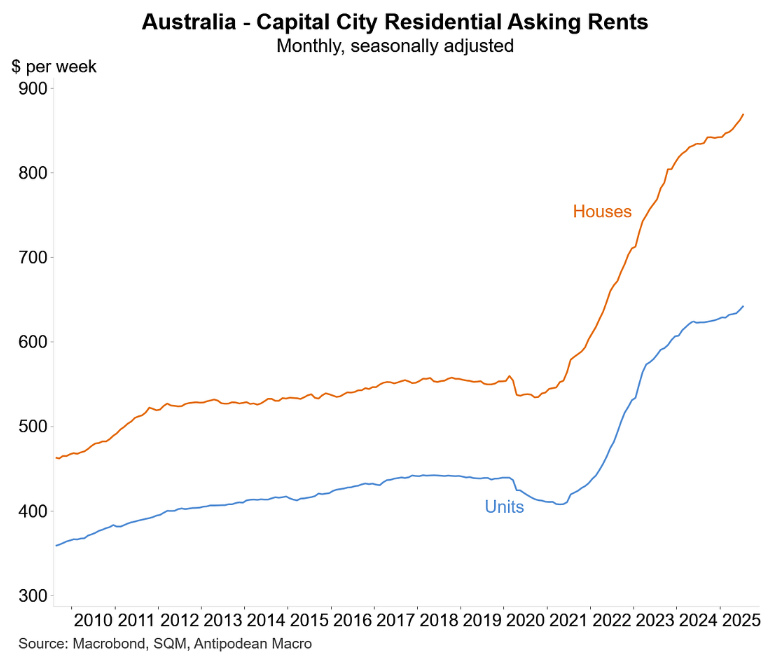
This increase in rents coincided with the surge in temporary migrants.
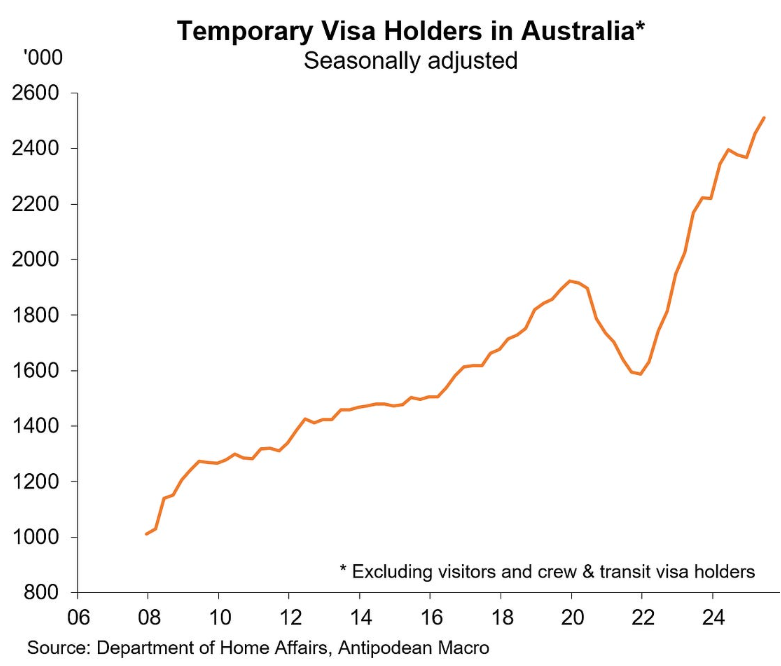
Gamlen also tried to argue that migrant workers were brought to Australia in construction trades, thereby helping to ease the housing shortage.
“Some of them come in and build houses, and some are housebuilders. It evens out, migration is a small piece of the housing puzzle. Other issues with housing are to do with the problem”, he said.
Yet, data compiled by the pro-migration Grattan Institute shows that migrants are vastly underrepresented in the construction industry:
“Migrants who arrived in Australia less than five years ago account for just 2.8% of the construction workforce, but account for 4.4% of all workers in Australia”, Grattan reported.
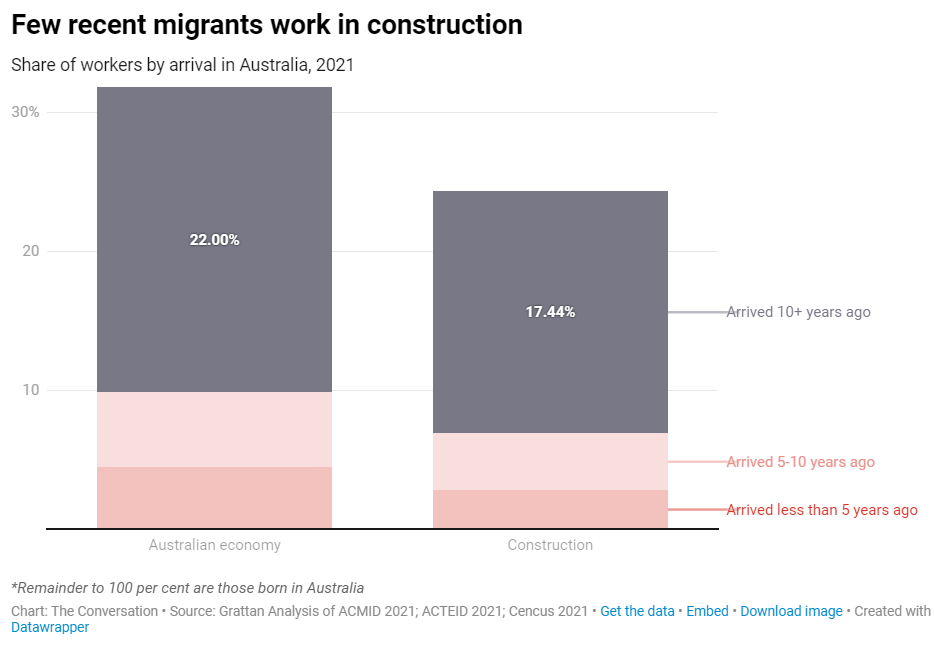
Therefore, migrants have added far more to housing demand than supply.
Abul Rizvi also claims that it is virtually impossible to cut NOM anyway:
Rizvi said the government would probably struggle to meet its own promise and projections. He said the only way to cut migration by a large enough amount would be to slash visas for partners of Australian residents, visas for overseas workers, or both—options he expected would be unpalatable to the government, on either a policy or a political level.
“There’s no easy way out. They’re all bad options,” Rizvi said.
This is complete and utter rubbish from Rizvi. NOM could be easily cut by:
- Slashing the number of student visas by significantly lifting English-language standards, financial requirements, entry standards, pedagogical standards, and restricting the number of hours that students can work.
- Cutting graduate visa numbers by only allowing top-of-class international graduates to receive post-study visas.
- Lifting the wage floor on permanent and temporary skilled visas well above median full-time earnings (currently ~$90,000).
- Slashing the number of permanent skilled visas handed out every year to 70,000, from 132,000 currently, by focusing on high skills and pay and limiting secondary skilled (partner) visas.
- Abolishing the 8,000 elderly parent visas handed out each year.
- Cutting the humanitarian migrant intake back to 13,000 from 20,000.
- Tightening the Administrative Review Tribunal appeals process to stop frivolous asylum claims and to cut the number of migrants sitting on bridging visas (currently numbering 370,000).
Canada has successfully slashed immigration as part of a planned three-year population freeze. Australia can too.
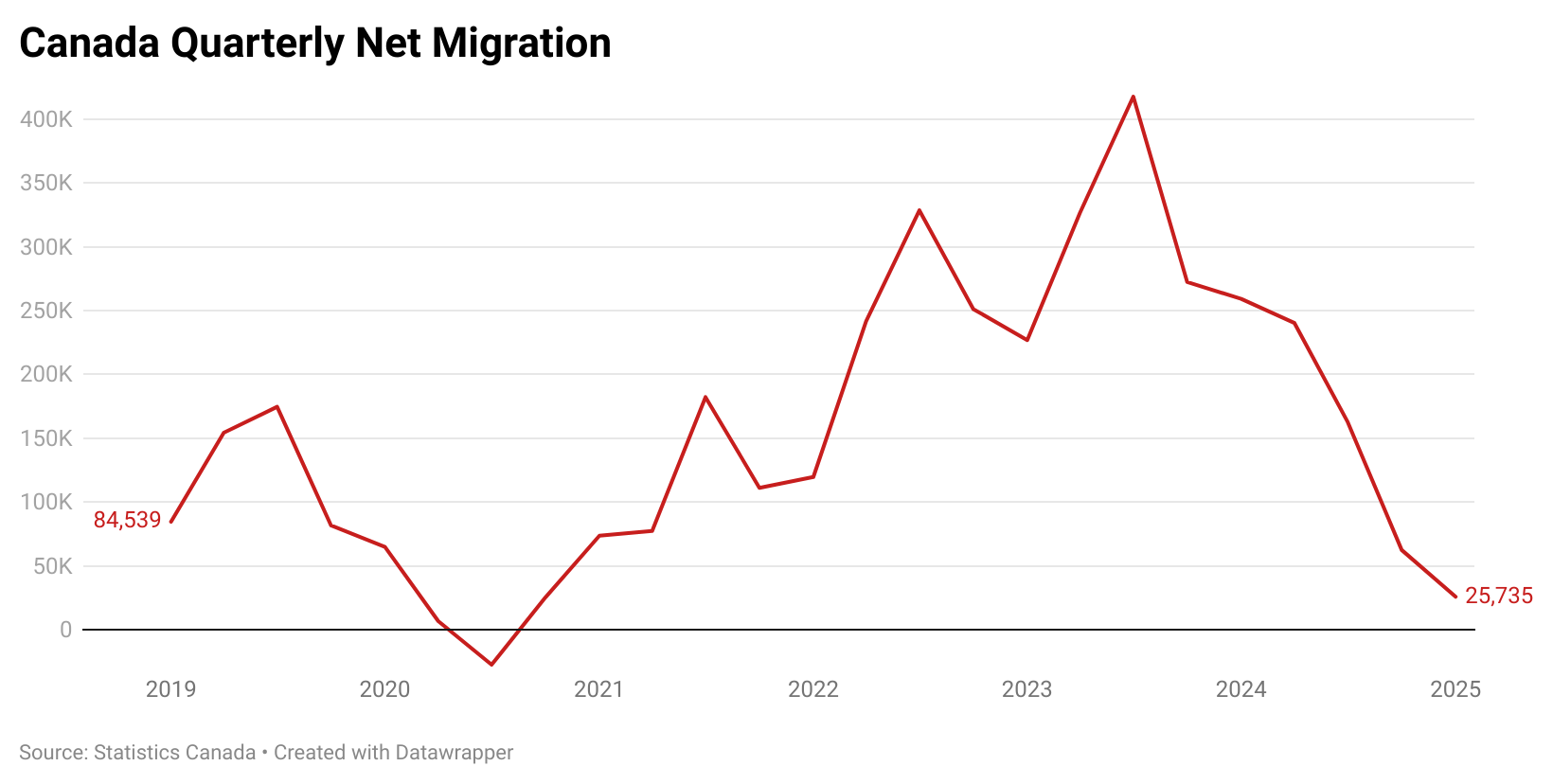
All it requires is a bit of political will and honesty—something that the likes of Gamlen, Rizvi, and the left-leaning media lack.

